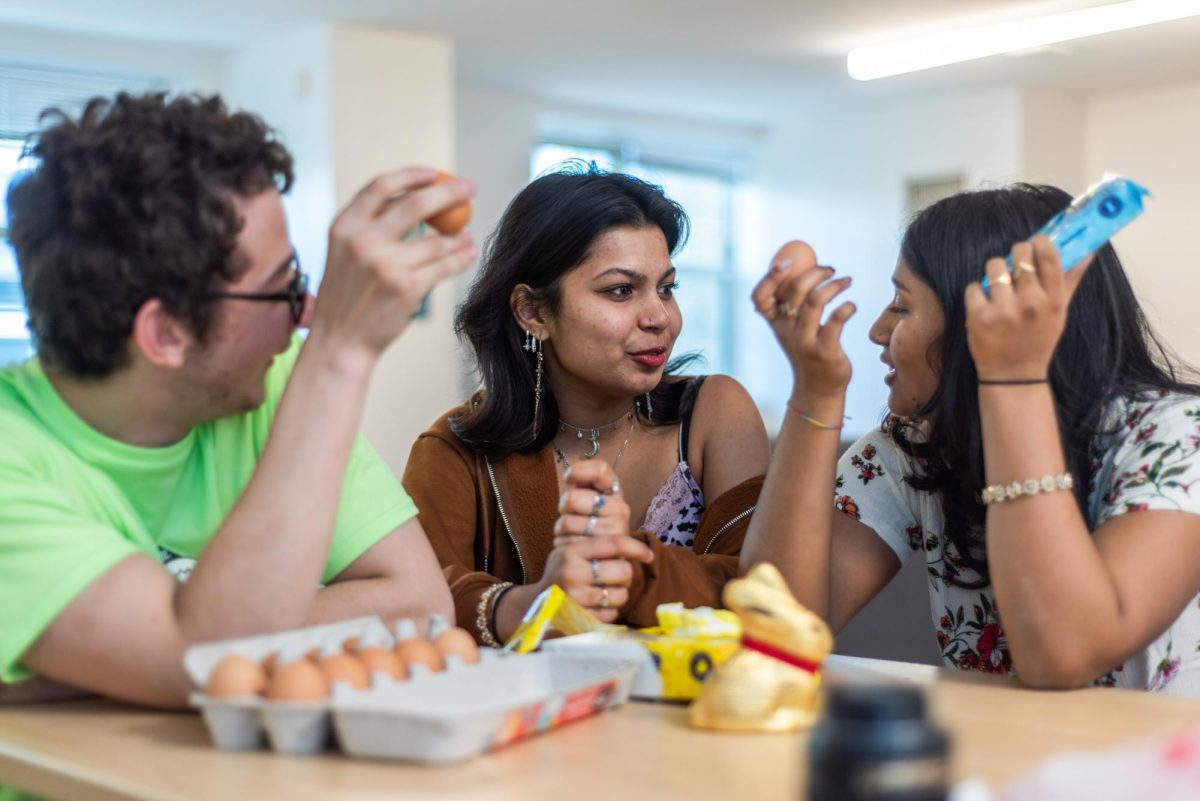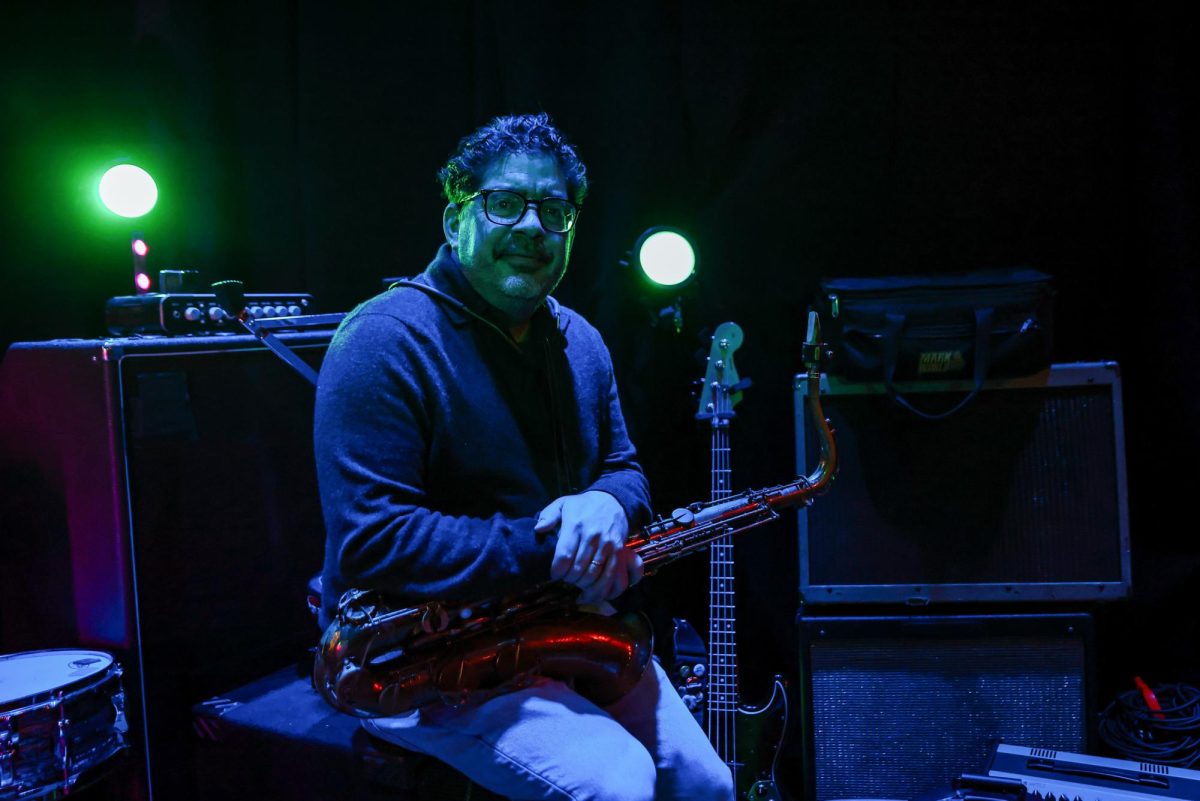Danny Kim started working full time as an engineer straight out of college in 2017. Four years later, he spends all his time running one of the District’s most popular food accounts.
After deciding he didn’t want to work in an office setting for the rest of his career, Kim dove into creating his brand, Eat the Capital, which is a multi-platform social media company highlighting D.C.’s vibrant restaurant scene. With more than 120,000 followers on Instagram, 66,000 followers on Youtube and 47,000 followers on TikTok, Kim posts regular content about the food he eats in D.C. and the local chefs who make it.
Eat the Capital started as Kim’s personal food account during his senior year at the University of Maryland. He would post pictures for fun to document the foods he tried when he visiting the District.
“It started as an interest, a hobby,” Kim said. “I actually did free work for two to three years, and then eventually I got in front of a lot of people where I grew the page.”
It wasn’t until 2019 that Kim officially branded the account Eat the Capital and truly launched his business.
Kim said when he first decided to make the jump from full-time engineer to full-time food influencer, he was living with his mom and using money he saved up from engineering to support himself while he built his brand.
But Kim said it wasn’t an easy start. When he still didn’t have a large following, Kim said restaurant owners would get annoyed when he called for interviews or filmed his experience.
“I got yelled at by restaurants for soliciting or calling them to ask if I can take photos at their place,” Kim said. “I could have easily quit and then gone back to my engineering job. But I just kind of stuck my head down and was stubborn about what I wanted. And eventually, things figured themselves out when people start seeing you as a genuine person.”
As an outsider to the D.C. restaurant scene and food industry, Kim said he was only really able to build trust and connections as he gained followers.
“Over time the page just grew traction to the point where restaurant owners were respecting my page,” Kim said. “Slowly over time the word got around and the page went from 30,000 to 70,000 and now it’s at 127,000 followers.”
On Instagram, his main platform on which he noticed these first large upticks in followers, Kim posts a combination of food photos and short edited videos documenting the restaurants he visits.
In 2019, at about the same time Kim officially branded his pages as Eat the Capital, he started making TikTok videos. He runs both his personal TikTok account, @dannygrubs, and @eatthecapital, the main Eat the Capital TikTok page.
“They’re fun, short-form videos that really capture the whole experience if you want to go to a restaurant or takeout,” Kim said.
TikTok videos on the Eat the Capital account are mostly formatted like those he posts on Instagram which give viewers a quick overview of a restaurant and the food offered. His second TikTok account surpasses the main Eat the Capital TikTok in followers with a massive 1.2 million.
On his personal page, Kim mainly posts challenge-type videos where he challenges chefs to turn cheap fast food meals into complex dishes. One video, which has more than 20 million views, features a chef who turned a McDonald’s Quarter Pounder into a Beef Wellington.
“It’s essentially a showdown,” Kim said. “I’m looking to showcase chefs’ talents by challenging them to turn something cheap into something that is fine dining worthy.”
Kim said TikTok, more than Instagram, has been an effective tool to help support local businesses. He said restaurants have reached out after their business is featured in a TikTok video saying that their sales increased by as much as 50 percent in just one week following the video.
“I’ve been doing that for the past year now, just helping out local restaurants,” he said. “I think a lot of people, because everybody wants to do the same, they go and support whatever I showcase.”
He’s also found success on Facebook, where followers will send him messages with recommendations for spots to try. The group is made up of a local D.C. community of foodies who regularly discuss their favorite restaurants and is a resource for people to find their next bites.
“You don’t really see people commenting and talking to each other in the comments, so there’s no real communication happening between the followers,” Kim said. “I wanted that type of conversation to happen so I created that Facebook group.”
In addition to his own social media endeavors, Kim provides social media consulting to local restaurants to help them increase their outreach and achieve specific branding goals.
Between creating content for his own pages and assisting restaurants in developing their own social media presence, Kim’s days are packed and often entail a variety of tasks.
“We’ll have days where we’re either shooting content by going to a restaurant and sharing an actual experience, or it’s talking to restaurant owners and seeing how we can help them,” Kim said. “Another day, like I’ll be shooting with a chef a video for the TikTok page.”
After multiple years of consistent effort to build his page to where it is today, Kim said he is still “not really successful yet.”
“The key really is not quitting,” Kim said. “Whatever it is that you want to do, if you just keep doing it and believe in yourself, then you can do it.”







